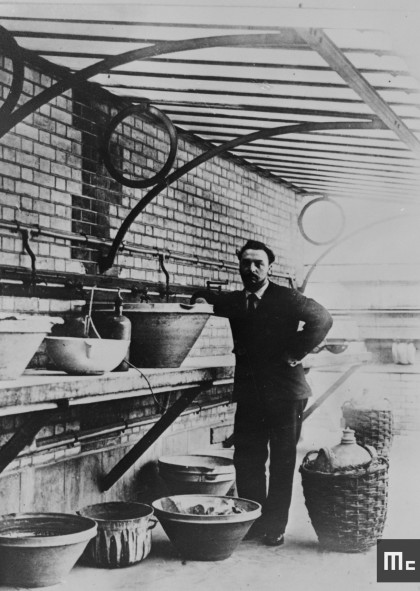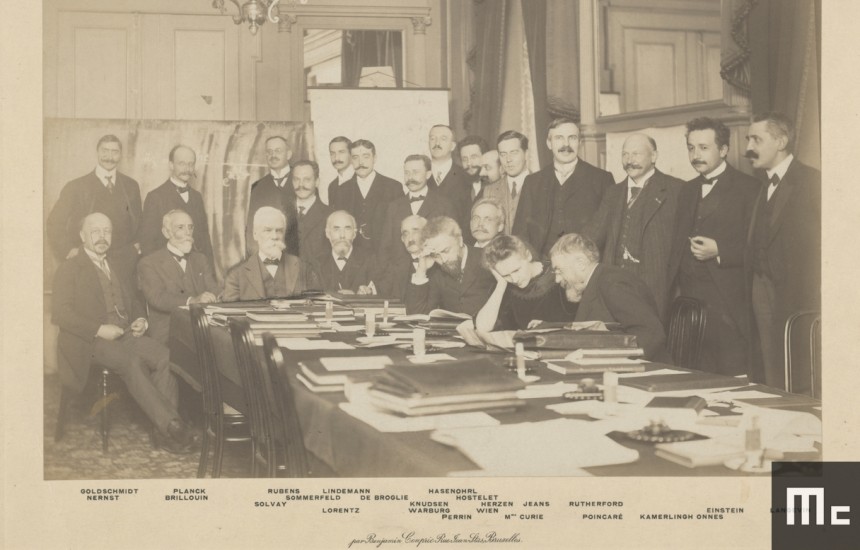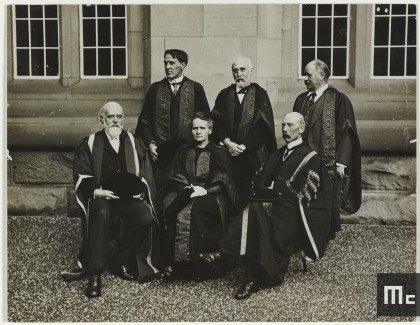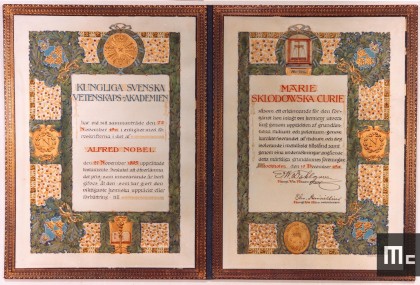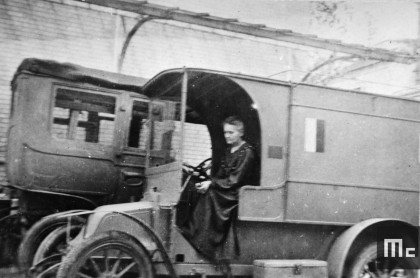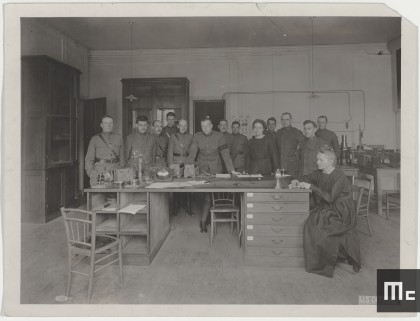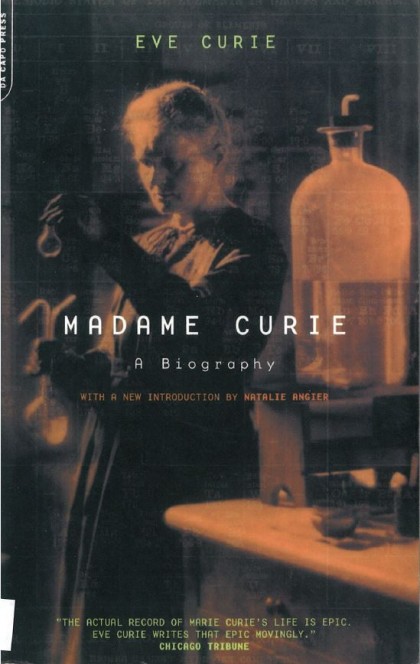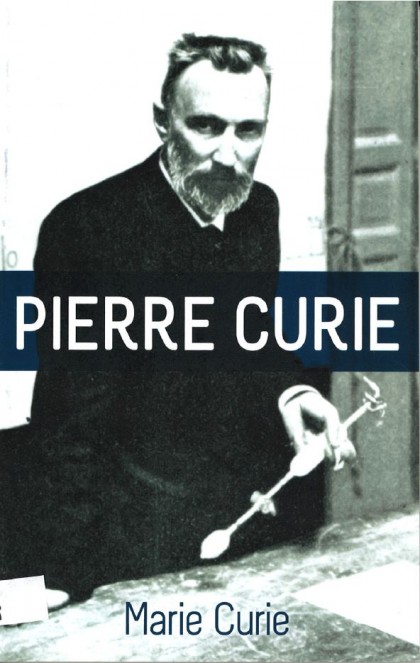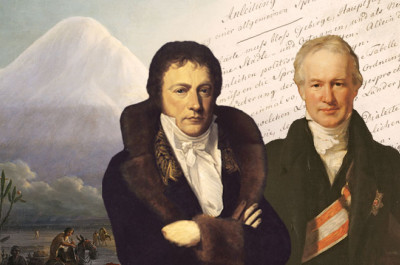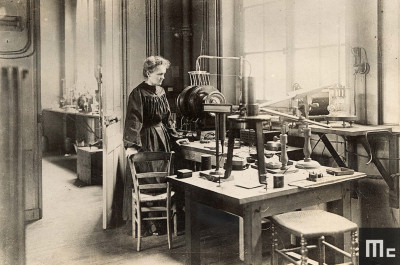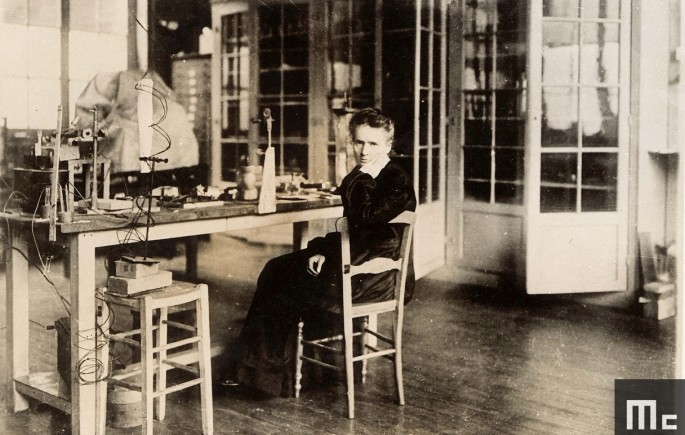
Trials, tribulations and consecration (1906-1919)
The first female professor
Following the death of her husband Pierre, Marie Curie, devastated at the age of 39, continued the research on which they had been working together while also raising their two daughters.
She took over Pierre Curie’s post teaching physics on 5 November 1906, picking up where he left off. Her first lecture attracted a crowd of journalists and curious spectators.
She was named Titular Professor of Physics, replacing her late husband on 16 November 1908, to take up the renamed position of “General physics and radioactivity”. She thus became the first female professor, both at the Sorbonne and in the whole of France
Alongside her teaching work, Marie Curie worked assisted by André Debierne (1874‑1949) to elaborate an international standard for measuring radium in the laboratory on rue Cuvier. They succeeded in isolating pure radium metal in 1910 and, in the same year, she wrote her Treatise on Radioactivity – the founding publication for this new science.
A second Nobel Prize
1911 was a pivotal year. At the instigation of her close friends, Marie Curie posed her candidacy herself to the Academy of Sciences in January. It was the first time a woman had been named as a candidate to the French Institute, and public opinion was divided. Anticlerical republicans were in favour of Curie’s election, whereas conservative Catholics supported the physicist and doctor Édouard Branly. Curie lost her bid and Branly won by two votes; never again would she renew her candidacy at the Institute.
From 27 to 31 October 1911, she attended the first Physics Solvay Council, founded by the Belgian chemical manufacturer Ernest Solvay (1838-1922), in Brussels. She was the only woman at the first conference and in many of the later years, alongside many prominent scientists including Ernest Rutherford, Max Planck, Paul Langevin, Niels Bohr, Albert Einstein and Jean Perrin.
[Learn more about the Physics Solvay Council on PSL-Explore: read our Introduction and our collection of archives and correspondence.]
In November, the relationship between Marie Curie and the physicist Paul Langevin was the subject of a smear campaign in the far-right press.
Support from the international scientific community helped her to overcome the ordeal. On 10 December 1911, and despite the controversy in her private life, Curie was awarded the Nobel Prize in Chemistry by the Academy of Sciences in Stockholm “in recognition of her services to the advancement of chemistry by the discovery of the elements radium and polonium, by the isolation of radium and the study of the nature and compounds of this remarkable element.”
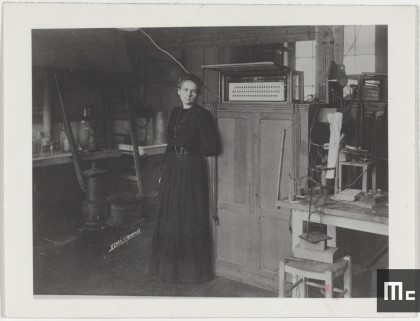
Unfortunately, this recognition on the world stage occurred at the same time as certain serious health problems. Marie Curie was diagnosed with a kidney disease. After undergoing her first operation, she was required to rest for several long months and could only return to her laboratory in September 1912.
Curie finished her work in January 1913. She deposited a sealed ampule in a safe at the International Bureau of Weights and Measures in Sèvres that contained a gram of radium chloride that she had managed to purify. This constituted the first radium standard, known today as the “Marie Curie standard”.
La première guerre mondiale
In August 1914, the First World War broke out. Marie Curie’s laboratory lost many people to the resulting universal conscription. Rather than leaving to join her daughters in Brittany, Curie decided to use her knowledge to help the wounded by helping to establish military radiology centres.
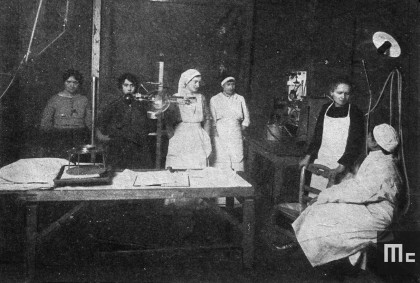
She coordinated specialist training for nurses and installed both stationary and mobile radiology units. In particular, she outfitted around 20 vehicles, later nicknamed “little Curies”, that were intended to be sent to the various war fronts. In this way, Marie Curie participated in developing radiology in military hospitals, which enabled doctors to locate fragments of shrapnel lodged in soldiers’ bodies and treat a million wounded soldiers within close proximity to the front.
Curie was assisted by her daughter Irene, who was just 17 years old at the time when she became a Red Cross nurse. They travelled up and down the war front training radiology nurses in how to use the x-ray tubes, and working to educate surgeons in the advantages of the technique. Marie and Irene also took charge of the practical teaching of radiology at the Edith-Cavell hospital by giving lessons in Marie’s new laboratory at the Radium Institute.
Marie Curie detailed her experiences of the war in her book Radiology in War, published in 1921.
Bibliography
Please find below a selection of books on Marie Curie's life and scientific career.
Madame Curie, A Biography by Eve Curie, Da Capo Press, 2001
“Marie Skłodowska Curie (1867-1934) was the first woman scientist to win worldwide acclaim and was, indeed, one of the great scientists of the twentieth century. Written by Curie’s daughter, the renowned international activist Eve Curie, this biography chronicles Curie’s legendary achievements in science, including her pioneering efforts in the study of radioactivity and her two Nobel Prizes in Physics and in Chemistry. It also spotlights her remarkable life, from her childhood in Poland, to her storybook Parisian marriage to fellow scientist Pierre Curie, to her tragic death from the very radium that brought her fame. Now updated with an eloquent, rousing introduction by beast-selling author Natalie Angier, this timeless biography celebrates an astonishing mind and an extraordinary woman’s life.”
Ève Curie
Pierre Curie, with autobiographical notes by Marie Curie, by Marie Curie, Dover Publications, Inc., 2012
Marie Curie, A Life, by Susan Quinn, Da Capo Press, 1995
“One hundred years ago, Marie Curie discovered radioactivity, for which she won the Nobel Prize in physics. In 1911 she won an unprecedented second Nobel Prize, this time in chemistry, for isolating new radioactive elements. Despite these achievements, or perhaps because of her fame, she has remained a saintly, unapproachable genius. From family documents and a private journal only recently made available, Susan Quinn at last tells the full human story. From the stubborn sixteen-year-old studying science at night while working as a governess, to her romance and scientific partnership with Pierre Curie – an extraordinary marriage of equals- we fell her defeats as well as her successes: her rejection by the French Academy, her unbearable grief at Pierre’s untimely and gruesome death, and her retreat into a love affair with a married fellow scientist, causing a scandal which almost cost her the second Nobel Prize. In Susan Quinn’s fully dimensional portrait, we come at last to know this complicated, passionate, brilliant woman.”
About
This virtual exhibition has been created as a natural prolongation of the travelling exhibition "Marie Curie 1867-1934". Arranged by the Musée Curie in 2011 for the International Year of Chemistry, the exhibition serves to commemorate the centenary year of Marie Curie’s Nobel Prize in Chemistry.
Translated in several languages, the exhibition has travelled continuously throughout the world. For further details on how to book the exhibition, click here.
Credits
The exhibition has been arranged by the Musée Curie, with support from the Foreign and European Affairs Ministry, the Association Curie Joliot-Curie, the Institut français, the Institut Curie and the National Center for Scientific Research CNRS.
All images are provided by the Musée Curie’s archives.
Arrangement of the Virtual Exhibition
Xavier Reverdy-Théveniaud
With help from
Annael Le Poullennec and the team at the PSL Resource and Knowledge department

